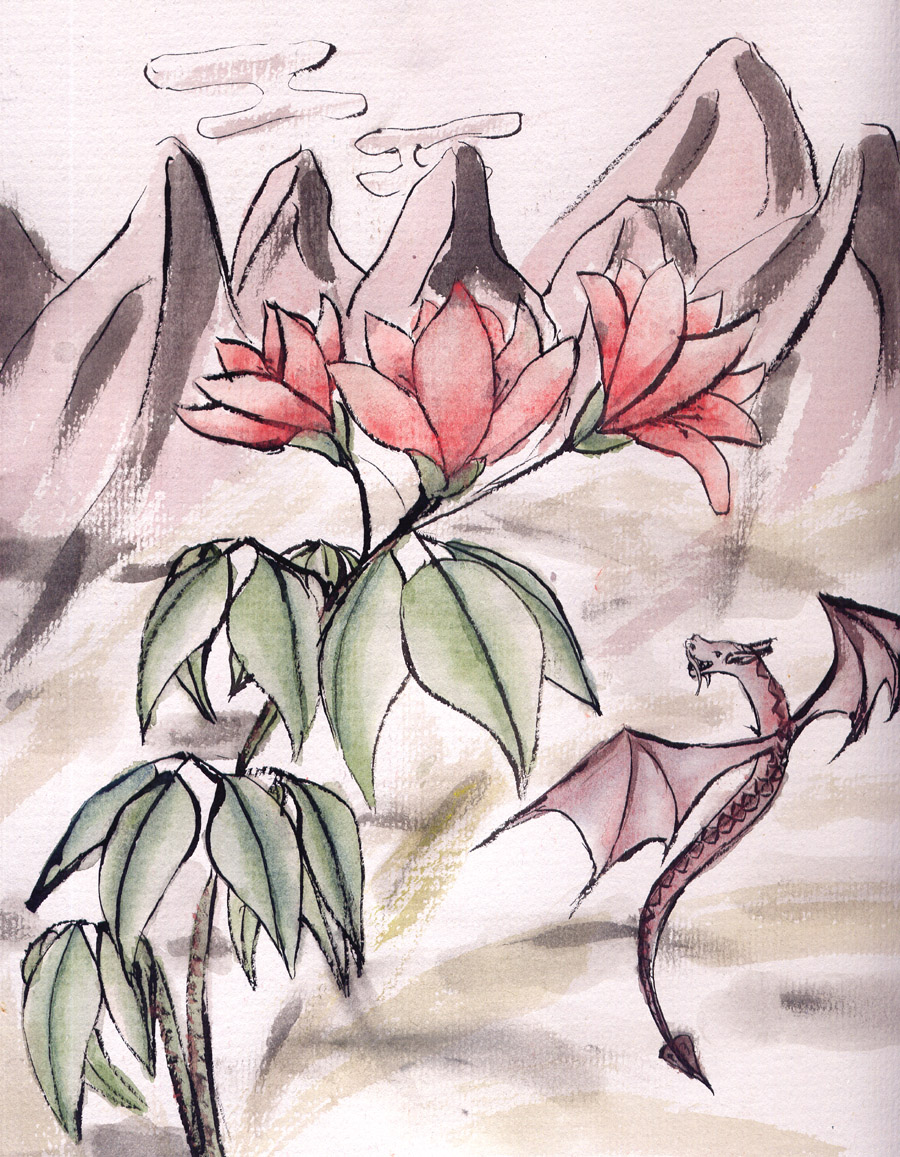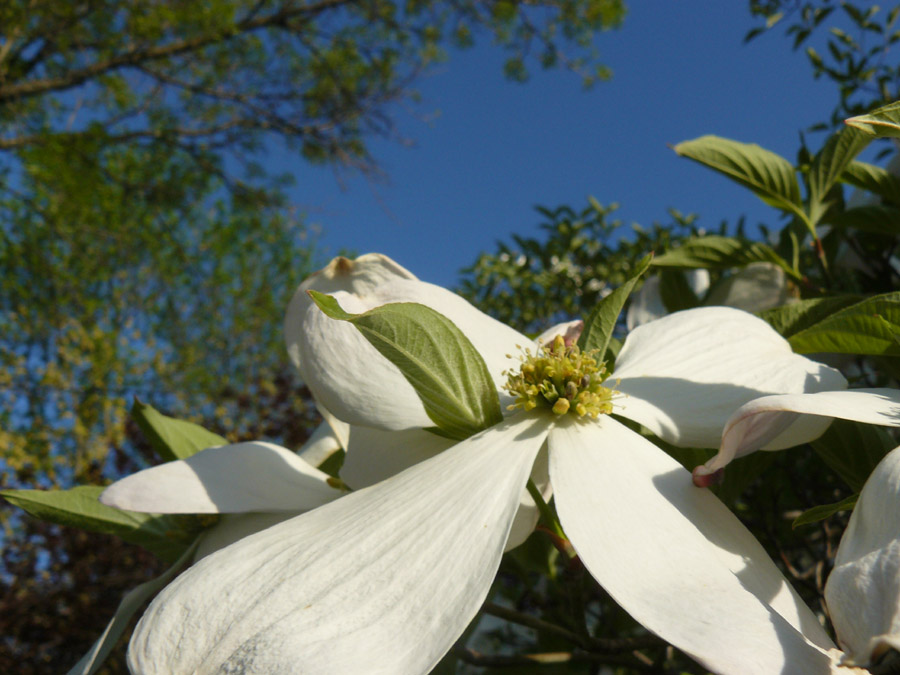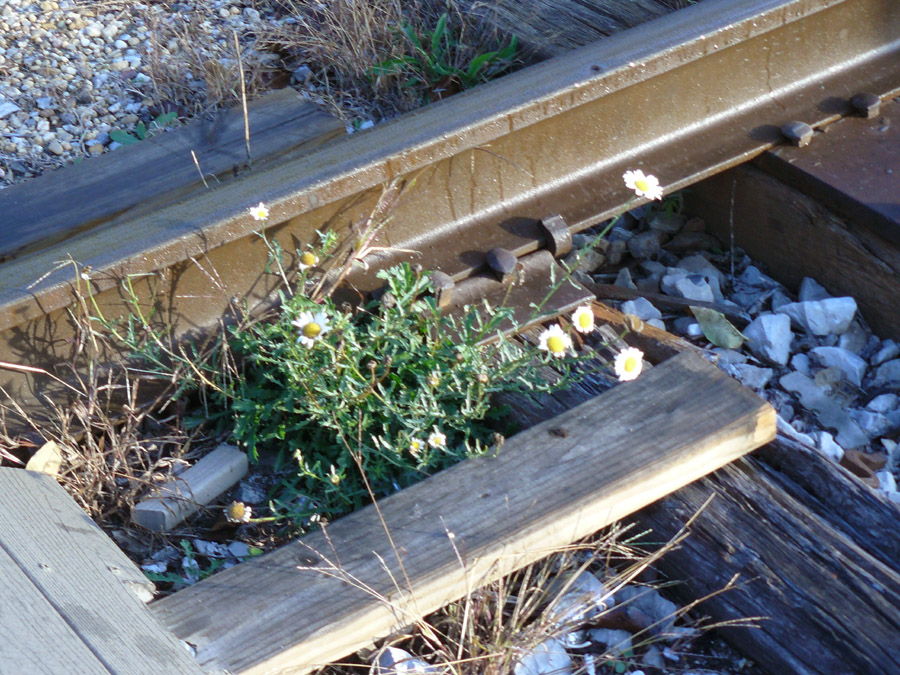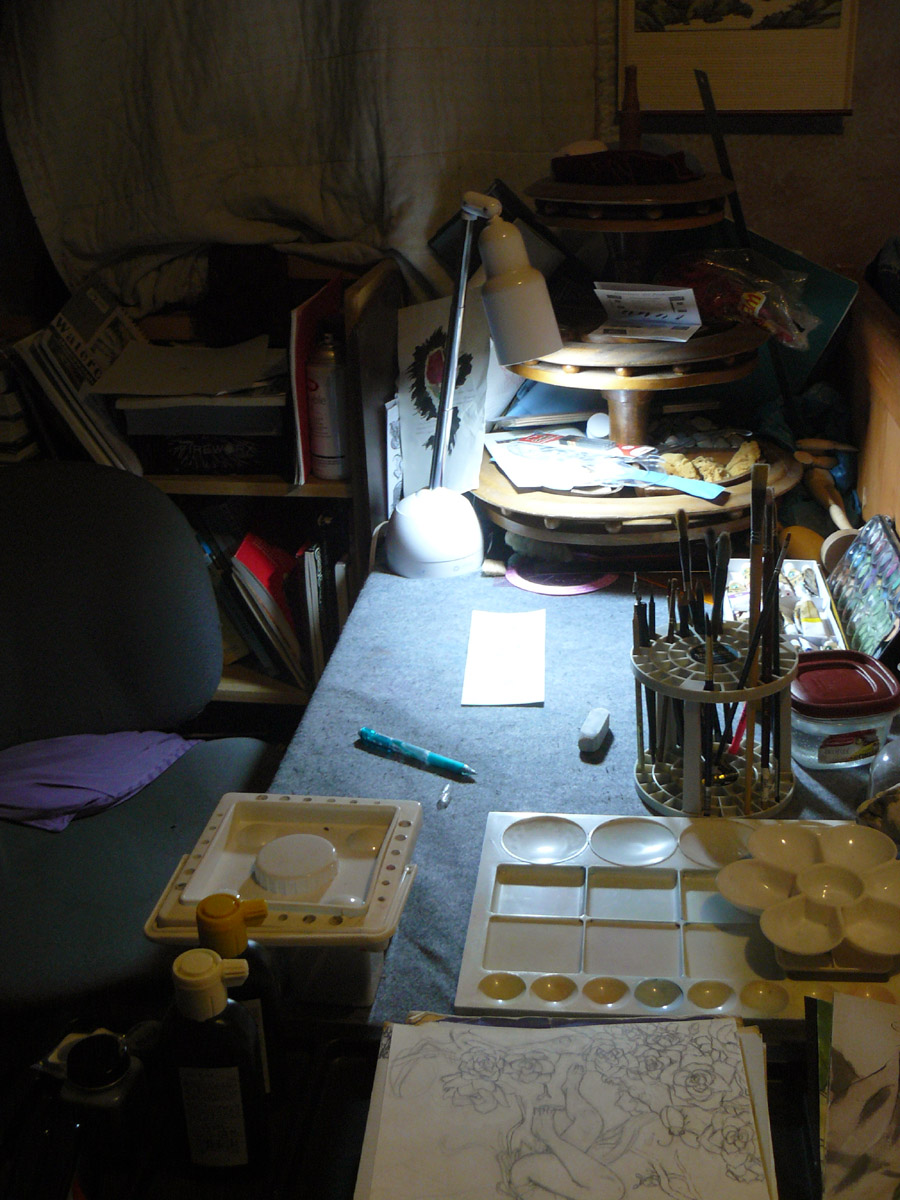 Location Taken: Savage, Maryland
Location Taken: Savage, Maryland
Time Taken: May 2012
I just neatened up my art workspace, so what better time to talk about it?!
I work better if I have a permanent workspace, set up so I can jump into art at any moment. So I set aside part of my small room for this. There’s not much more to it than this. I can’t even push back my chair too much, since I run into a wall. But my art production has gone noticeably up since I set this up a few months back.
In the center is my main work area. You can see my current piece there, under the light. It’s a natural light, with a weighted base, which is good for seeing the colors properly. I’m not sure if you’ve realized, but a lot of indoor lighting is strongest in the yellow colors. I set my camera to “Cool” colors to take this photo, to balance out some of the yellow, and even then all the white plastic in the lower part of this photo has a strong yellow cast from the overhead light I had on. But the center of the photo is actually pretty close to the right colors, since the natural light uses the full wavelength.
I’m currently in the penciling stage for my current piece (which I should be able to show next Sunday), which is why I have a pencil and eraser out and why you can’t actually see anything on the piece. The pencil lines are too faint to counter the washed out effect of the light directly hitting it. And yes, I do work on pieces that small. For whatever reason, I like working at that scale.
I’ve got my brushes quite accessible in their holder, and the colors are at the back of the desk. I’ve covered the desk with a piece of felt. I work with water-based paints, after all, and the felt catches and contains any spills.
You know, I don’t think I’ve mentioned exactly what media I use. I use the Chinese Painting Colors, such as you find in, well, Chinese brush paintings. They act similar to Western watercolors, but have several key differences. First, the specific colors in the set are different. I’ve got Phthalocyanine Blue instead of Manganese Blue, for instance. Second, the Chinese colors tend to have a more consistent color when they dry. This does mean I lose out on the interesting variations of tone that are a key part of Western watercolor art, but I prefer having the constancy. Third, the Chinese colors are significantly cheaper than the Western watercolors. I can order a set of 21 tubes of Chinese paints, each containing 12 ml of paint, from Oriental Art Supply for $19.75. In fact, I just did, along with some other supplies (which is why I cleaned; I had a few more nifty things I had to put somewhere). Whereas I spent $6 on a single 5 ml tube of Western watercolors. Feel free to do the math (though to make it easier, I did get 50 times more paint for just over three times the price). Now, that was the quality paint, but then, the Chinese paints I use are also quality.
And before you start saying “Oh no, it’s Chinese, it must be full of lead!”, please remember two things. One, this is a paint that is primarily used by Chinese painters in China, following one of the highly esteemed traditional arts of China. They’re not going to cut corners any more than well known Western paint companies will. Second, you’d be able to tell if there’s lead in the paint because it would turn white. Lead was used as a pigment for centuries, and in fact is actually better as a paint than the titanium white generally used these days, and would still be the white paint of choice if it weren’t for that pesky poisoning problem. Paints are all about chemistry, and making the colors is an involved process, especially for semi-transparent colors like the ones I work with. Any significant variation in the chemistry will produce visible results. Now, there are ways to synthesize paints to match the color, but it’s just about always to get away from toxicity, not add to it. I’ve got a few paints that have (Hue) added after them for that reason, such as my cinnabar color. Besides, even if they do have toxic paints, it would just be following as grand a tradition as the mercury that turned so many hat makers into mad hatters. Sometimes the best tool for the job is just not that good a tool for keeping you healthy. But we as a civilization are trying to mitigate such risks where we can, so it is highly unlikely that these paints are toxic.
I use primarily Chinese brushes, since I like the feel of them, but I do have a few western brushes. All the Chinese brushes have a tapering tip, which leads to fine variation in line but isn’t so good at, say, painting a square. So I’ve got a few flat brushes with a square brush shape, to do corners. I also have some brushes left over from my oil painting class, which I use as paint-mixing brushes since they aren’t suited for watercolors (the bristles don’t hold moisture as well, so the watercolor doesn’t get applied correctly). One of those, I use for loading ink and paint into my nib pens, which also are a good way for me to get consistency in my lines when I want it. I use those for calligraphy as well.
I’ve got a few trays for placing colors, though none of them currently have any colors on them. I did a full wash of all of them recently, and haven’t done any color work since. Watercolors can be fully revitalized from a dry state with a bit of water, so you can reuse your paints a lot. But they do come out a bit more dilute than the pure paint, and the colors have a good chance of getting polluted when you’re mixing colors together unless you’re far more careful than I am. So every so often, I wipe the trays clean and start over again. The paint’s cheap enough for that, after all.
I’ve got a lot of random useful things in that round shelf-like-thing in the back of the desk, such as sponges and measuring tools and the like. I store my paper primarily on the bookshelf there, though I have some rolls of special paper behind the round shelf, and some stock of massive paper up against the wall you can’t see behind the chair. I also store supplies in the two plastic shelves I placed next to the desk at the bottom of the picture. I store my ink on top of those, next to two piles of art. One’s my finished pieces and one’s my unfinished pieces. For various reasons I stop working on some pieces part way through (usually some other piece saying “make me” or life getting in the way) but I keep them around so I could potentially finish them one day.
There’s a bunch of other things I could talk about, but this is quite long enough, so this will do for now. Oh, one last thing. That white piece of cloth on the wall is a blanket covering a window. I have to cover them to keep the light down at the level I like, otherwise I get a headache after a bit. It’s a bit annoying being a visual artist with a light sensitivity issue. I need the light on to properly see what I’m working on, but I easily overdose on it. It’s a bit of a pain.
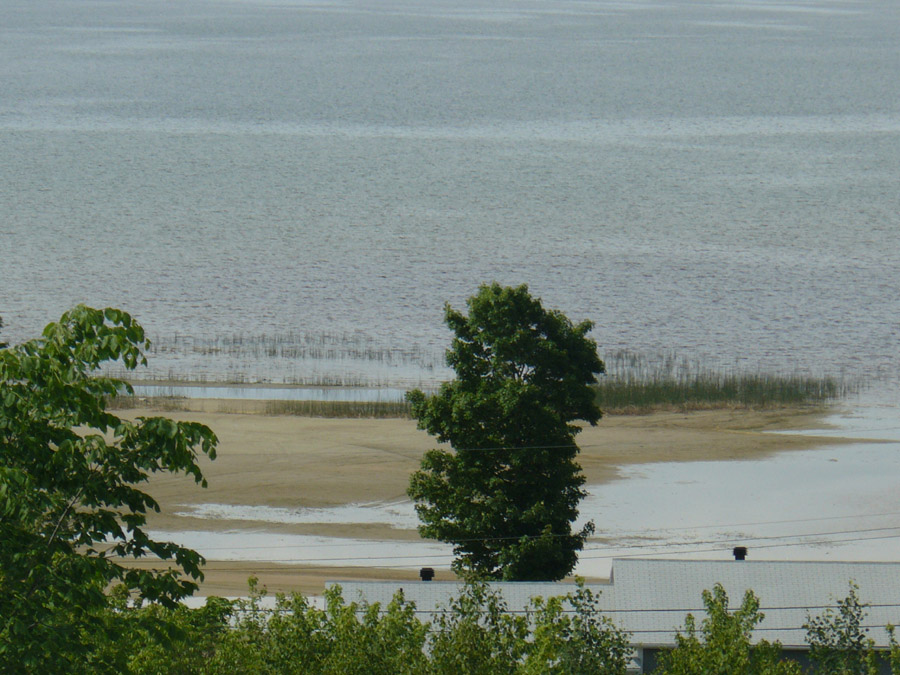 Location Taken: Ontario, Canada
Location Taken: Ontario, Canada

